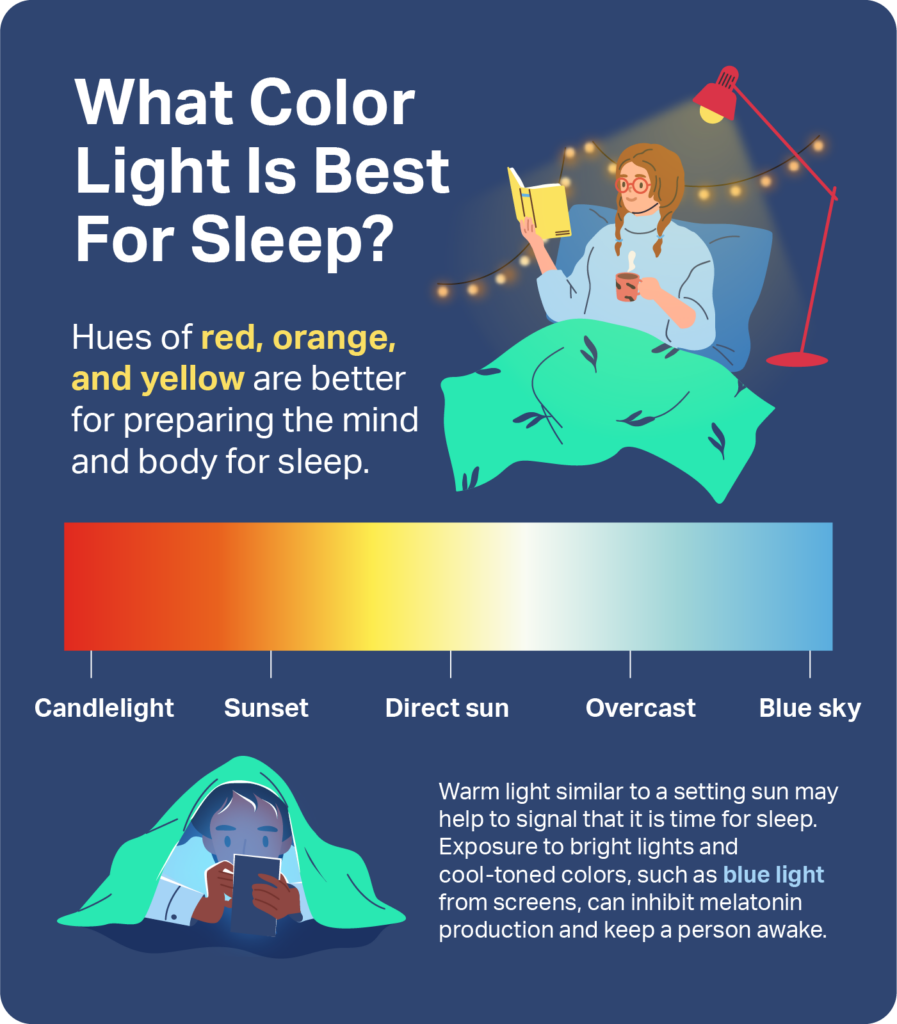Utforsk fordelene ved å bruke riktig lys om morgenen og få anbefalinger for de beste vekkelysene tilgjengelig i dag.
Innholdsfortegnelse
If you're not a morning person, a wake-up light can be a game-changer, improving your mood and getting your day off to a better start. In this article, we will explore the benefits of using the right light in the morning and provide recommendations for the best wake-up lights available today.

The Science Behind Wake-Up Lights
Traditional alarm clocks can be jarring and leave you feeling groggy and disoriented. However, wake-up lights offer a more gentle and pleasant awakening by simulating the rising of the sun. These lights gradually increase the level of light in your room, signaling your body to reduce sleep hormones and increase wakeful hormones.
Most wake-up lights also offer a sunset simulation feature, gradually reducing the level of light from 100% to zero, helping you fall asleep in a soothing manner. This feature promotes a healthy sleep routine and can be especially beneficial for those with sleep disorders.

The Best Wake-Up Lights
There are several wake-up lights available on the market, each with its unique features and designs. One highly recommended option is the Beurer Wake Up Light WL50. This stylish light serves as both a wake-up light and a regular table lamp, making it versatile for any bedroom or even for travel.
The Beurer Wake Up Light WL50 offers a customizable sunrise simulation, allowing you to set the duration and intensity of the light. It also provides various sound options, including birdsong, chimes, and alarm beeps. Additionally, the light can be used as mood lighting, allowing you to choose a specific color to create a relaxing ambiance in your room.
Se også
The Power of Color
The color of light can also have an impact on your wakefulness in the morning. Studies have shown that bright shades of yellow and orange are effective in waking you up and boosting your energy levels. These colors are attention-grabbing, cheerful, and stimulate the brain, making you feel more alert and energized.
Yellow, in particular, imitates the brightness of natural sunlight and has a positive effect on regulating our circadian rhythm. It promotes feelings of revitalization and joy, making it an excellent choice for waking up in the morning. Similarly, the vibrant color orange increases energy levels and evokes happiness and excitement.

LED Lights and Sleep
While all artificial light can impact sleep to some extent, not all LED lights are detrimental. Red LED light, in particular, has been found to be the most sleep-friendly color. However, getting sufficient natural sunlight exposure in the morning is the most science-backed way to wake up.
Exposing yourself to natural sunlight, even for a minimum of 10 minutes, helps regulate your circadian rhythm and improves your overall sleep quality. If getting outside is not feasible, using a wake-up light that simulates natural sunlight can be an effective alternative.

Light Therapy and Sleep Disorders
Light therapy, including the use of wake-up lights, has been found to be beneficial for various sleep disorders. It can help regulate circadian rhythm disorders such as delayed sleep phase disorder and non-24-hour sleep-wake disorder. Light therapy has also shown promising results in treating non-seasonal depression and other psychiatric mood disturbances.
Additionally, light therapy has been trialed in patients with Parkinson's disease and Alzheimer's disease, effectively improving sleep consolidation and circadian rhythm stability.
Se også
Conclusion
Choosing the right light in the morning can significantly impact your mood and overall well-being. Wake-up lights provide a gentle and natural way to wake up, simulating the rising sun and signaling your body to start the day. By incorporating the science of colors and light therapy, you can optimize your wake-up routine and improve your sleep quality.
Remember, the Beurer Wake Up Light WL50 is just one of the many great options available on the market. Explore different models and find the one that suits your preferences and needs best. Wake up feeling refreshed and ready to tackle the day with the power of light.

Hva vil Wiki fortelle oss?
What light should I use in the morning? Morning therapy has provided the best results because light in the early morning aids in regulating the circadian rhythm. People affected by seasonal affective disorder (SAD) have low levels of energy and have difficulty concentrating, experiencing a change in appetite and trouble sleeping.
A 2007 systematic review by the Swedish agency SBU found insufficient evidence that light therapy was able to alleviate symptoms of depression or seasonal affective disorder. However, a Cochrane review conducted in 2019 states that although the evidence for light therapy's effectiveness in preventing seasonal affective disorder is limited, the risk of adverse effects is minimal. Therefore, the decision to use light therapy should be based on a person's preference of treatment.
Light therapy has also been suggested in the treatment of non-seasonal depression and other psychiatric mood disturbances. A meta-analysis by the Cochrane Collaboration concluded that light therapy offers modest though promising antidepressive efficacy for patients suffering from non-seasonal depression. It can be used as adjuvant therapy to antidepressant medication or as stand-alone treatment for specific subgroups of depressed patients.
In the management of circadian rhythm disorders such as delayed sleep phase disorder (DSPD), the timing of light exposure is critical. Light exposure administered to the eyes before or after the nadir of the core body temperature rhythm can affect the phase response curve. Use upon awakening may also be effective for non-24-hour sleep–wake disorder. Light therapy has been tested for individuals with shift work sleep disorder and for jet lag.
Light therapy has also been trialed in treating sleep disorders experienced by patients with Parkinson's disease and Alzheimer's disease. It effectively led to more consolidated sleep and an increase in circadian rhythm stability for nursing home patients with Alzheimer's disease.
Overall, light therapy in the morning can be beneficial for regulating the circadian rhythm, improving mood, and treating sleep disorders.













